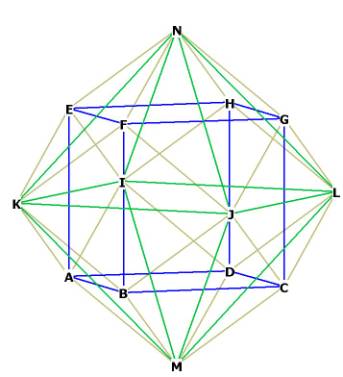|
(2017
midterm assignment) Model Student Midterm answers 2016 (Index) Essay 3: Web Highlights |
 |
Kyle Abshire
Literature of the Future: Knowledge in speculation of what’s to come
Science fiction has long been my favorite genre of literature, but it was not
until taking literature of the future, that I realized how closely future
narratives and science fiction were intertwined. Science is often used as a
medium to explain why a particular theme is prevalent in the future. Science
fiction is the term used when the author relies on speculation, to infer how
certain technological advancements might affect the world. Through close
inspection of the pre-submitted midterms from previous years we will discuss how
important the apocalypse, evolution, and alternative narratives are, and how
these narratives use science fiction to tell a story that relates to the common
reader.
Apocalypse, evolution, and alternative narratives are three different styles of
telling a story which takes place in the future. The apocalypse narrative
usually begins in the present and moves towards the future where there is a
climactic ending. The Bible is a terrific example of an apocalypse narrative and
in 2016, Vicente Garza captured how well the bible represents it. “In the
Scriptures, time is laid out as a preordained series of events that have passed
and will come to pass inevitably. So as the Lord created the heavens and
the Earth in seven days at the beginning of existence, one day the world will
come to an end with the sinners paying eternally and the righteous ascending to
the heavens to live in eternal glory.” Vicente uses scripture from revelation to
show heavily the Bible depends on the apocalypse narrative. The scripture used
is written with authority. The Lord is called the creator of Heaven and Earth
and the destroyer. The Bibles use of authority and the apocalypse narrative is
essential to its ability to sway believers. Evolution narratives can use a sense
of authority to get their message across as well.
The evolution narratives often uses’ a similar path as the apocalypse narrative.
However the evolution narrative will continue on after the apocalypse would have
ended. Vicente Garza uses The Parable of
a Sower to show how closely these two narratives are connected. “The world
spirals and evolves as does Lauren. Where the country once fell in its own
apocalypse, and Lauren’s father helped to create a new community, that community
too ends up falling and Lauren helps to create a new one” Vicente focused on the
theme of destruction that is used in both Parable and Revelation. Both stories
have an apocalypse of some sort—a destruction of everything the characters know.
However in Parable, Laura is able to continue her life after the destruction of
her world. The evolution narrative often takes the same approach as the
apocalypse narrative, but usually concludes with a lesson learned and an
evolution in ideas or thought to survive the next possible destruction. Unlike
the previous types of narrative, the alternative narrative is unique in its
style.
The alternative narratives take a completely different approach to future story
telling. Alternative narratives usually rely on time travel to tamper with
possibilities of the future. Christa Van Allen uses
H.G. Wells’ The Time Machine to show
how time travel is used to create alternative narratives. “There exists in the
narrative, observations on what the time traveler saw, but also questions about
how these things developed. You could even ask if the development of the time
machine changed the future into what the traveler saw.” Christa uses
The Time Machine to express how
alternate realities might be observed. The time traveler wonders while looking
at the future, how it came to be. Implying that a change in the past might
affect the future. She also beings into account that the creation of the time
machine might have affected the future as well. The alternative narrative uses
alternative story lines to make us question how we got here and how we can
improve our futures.
Science fiction is regularly used to explain how these futuristic novels can be
possible. Many futuristic stories rely on the creation of a new technology, that
alters how humanity interacts with itself. Science is used to make futuristic
novels interesting because the science allows for a technological advancement
that changes the way we live, for better or worse. Nikki Jones from 2016 uses
Parable to explain how science fiction is used to cause a change in society to
tell an interesting story. ”There is a real chance that America could in the
future blunder and end up being similar to the state of the world in Parable.
Also there is a realness to Lauren and her coming-of-age story that I think
students just coming into their own as well can understand and relate to.” Today
we are constantly warned that the technology of today is slowly destroying the
planet and Parable speculates on how our future might look if we do not act. The
use of a current issue with modern technology, that has run out of control is
what gets people interested and coming back for more.
The three narratives used to tell futuristic stories have their own styles and
techniques, but the majority rely on the use of science fiction, to relate to
and excite the reader. The apocalypse narrative uses a beginning and end, or
creation and destruction, defined by an authoritative style to portray the
severity of the story. The evolution narrative similar to the apocalypse
narrative, will rely on destruction of some sort but only to portray a sense of
rebirth or new ideas. After the destruction of one reality occurs a new type of
reality will be born form its ashes. Lastly the alternative narrative uses
alternate realities interacting with each other to portray how the future is not
already written and can be changed at any time. Each of these narrative types
use technological advancements, to explain the possibilities of such situations
and to attract the interest of readers.
 |
 |
 |
